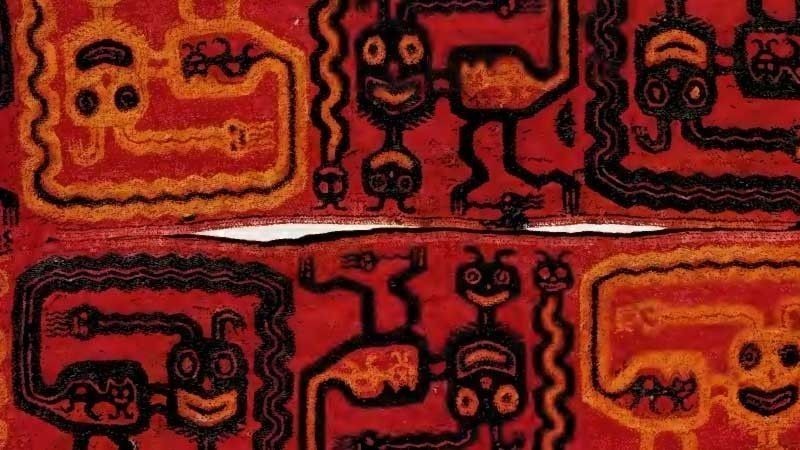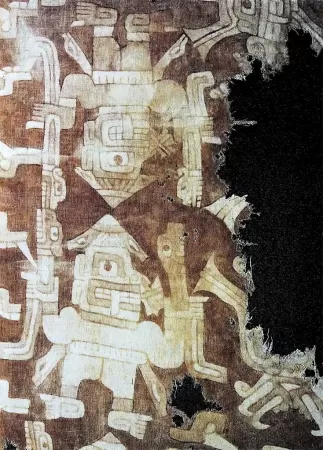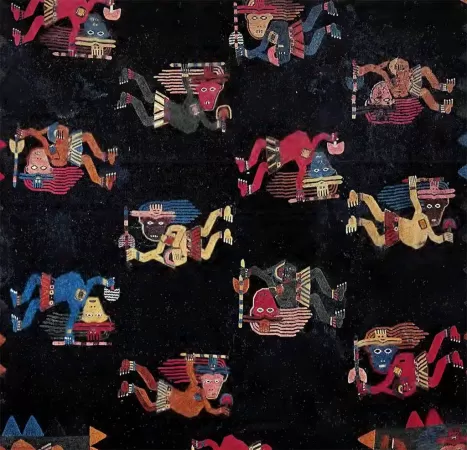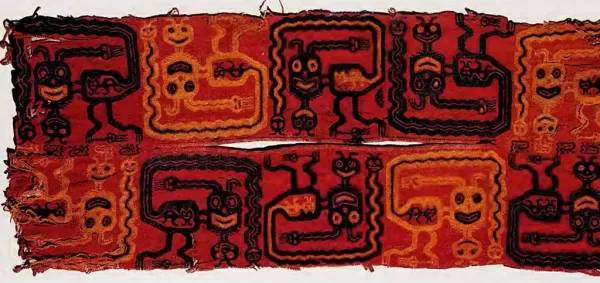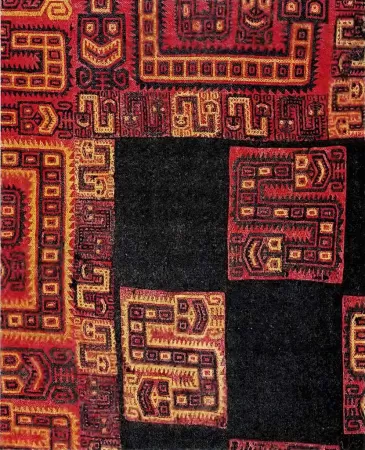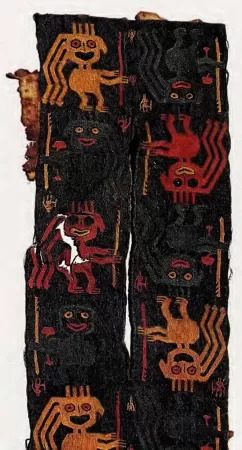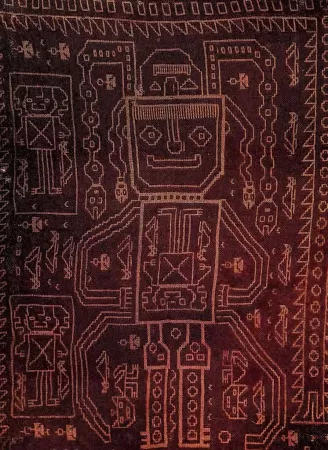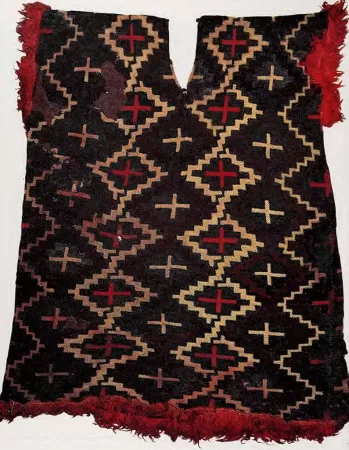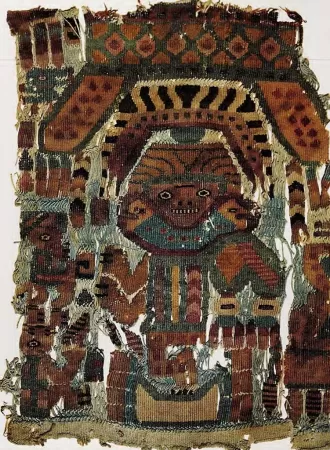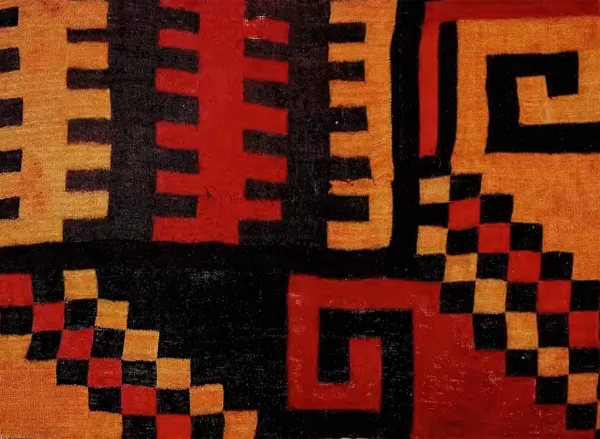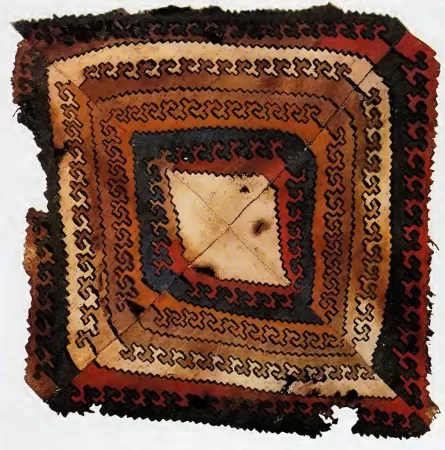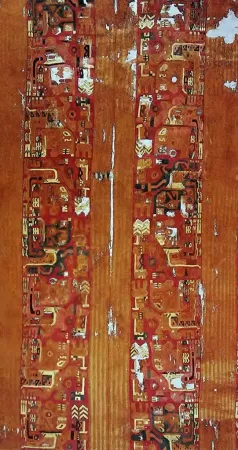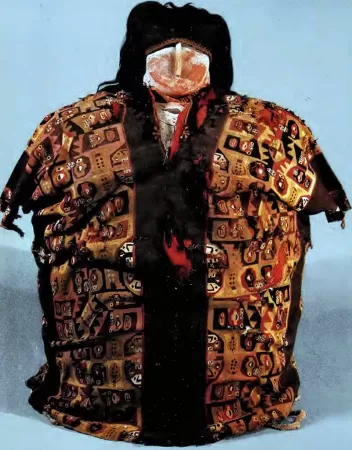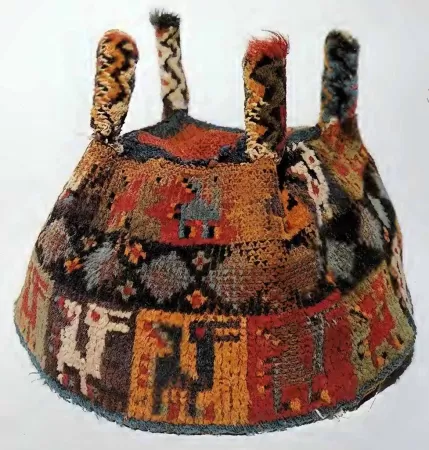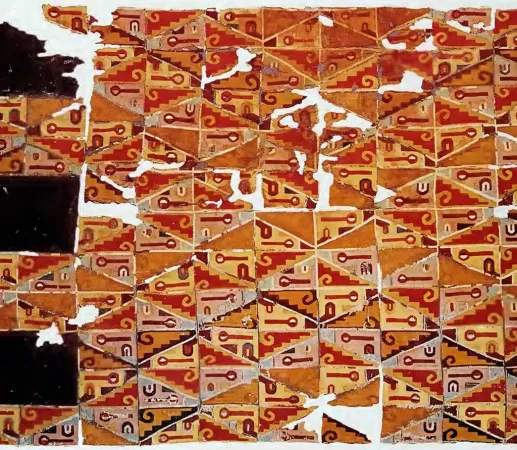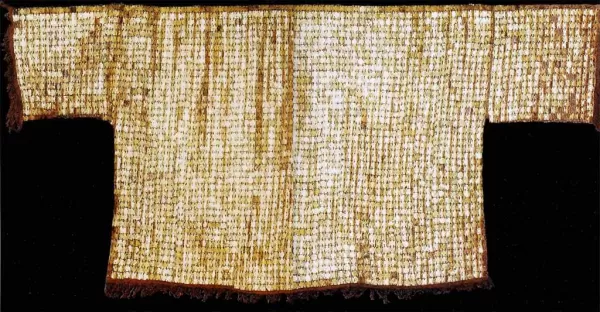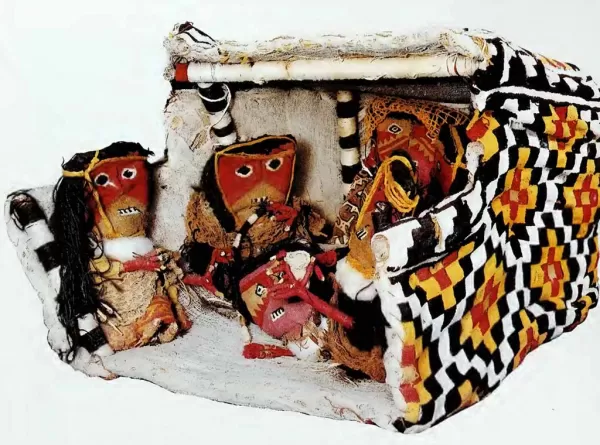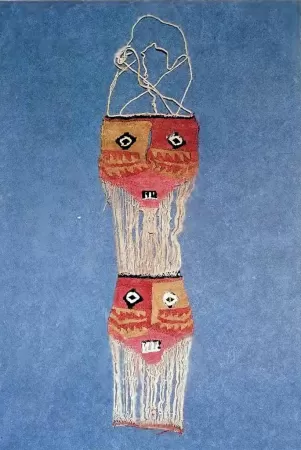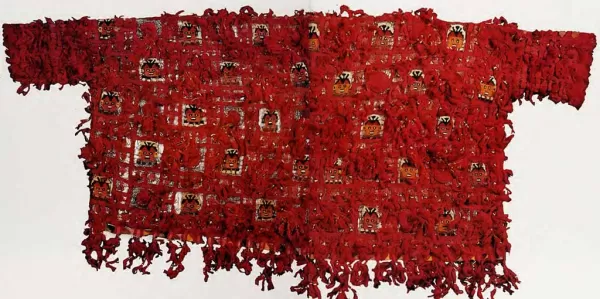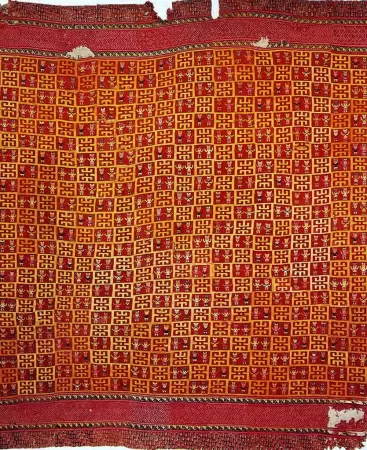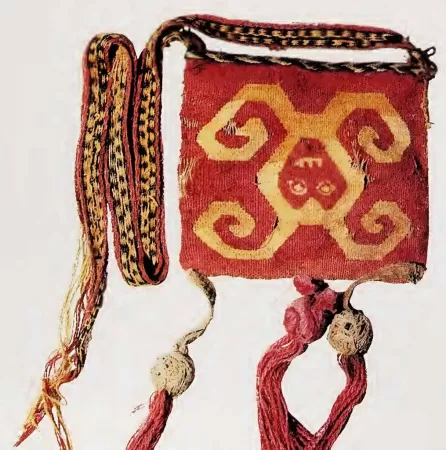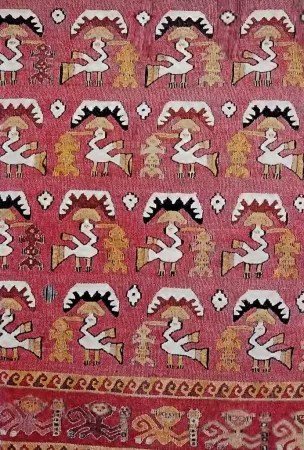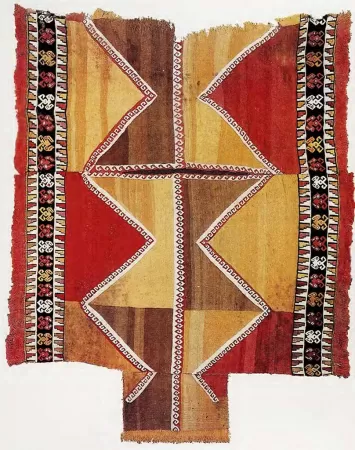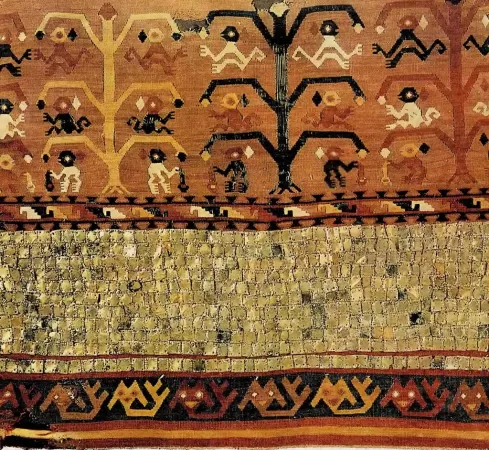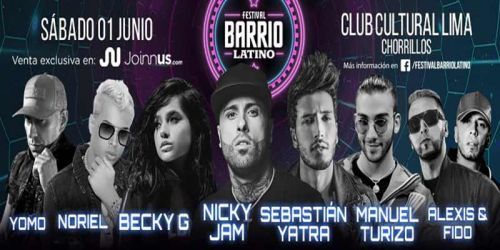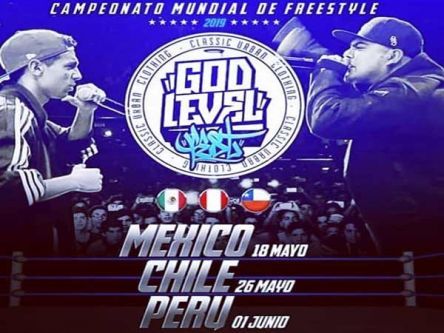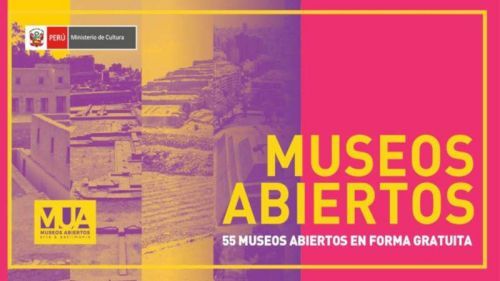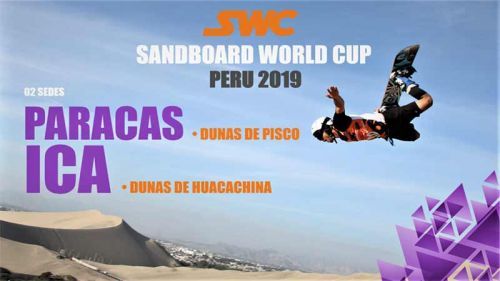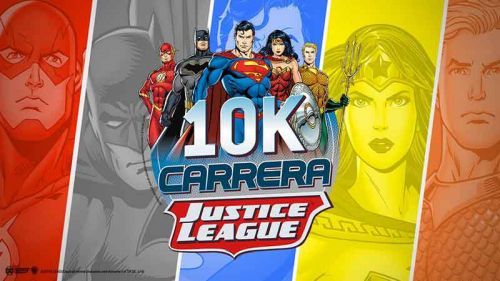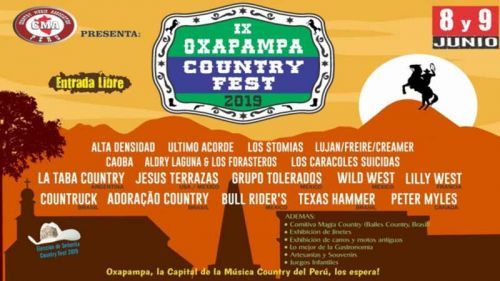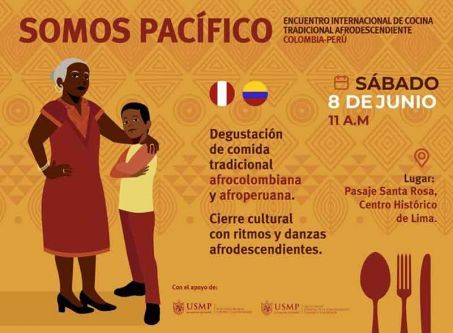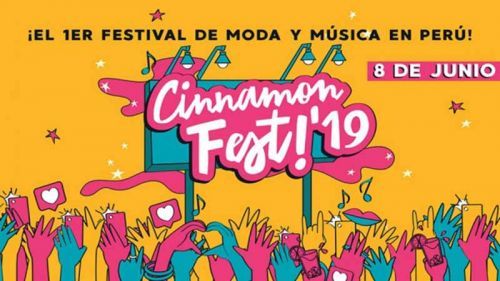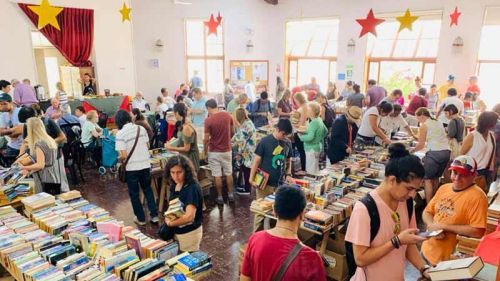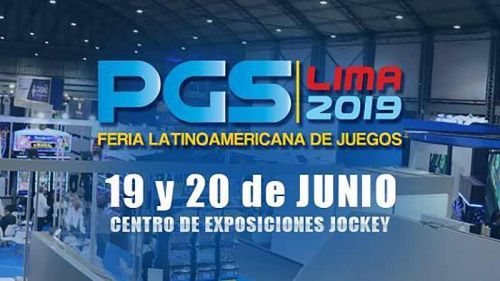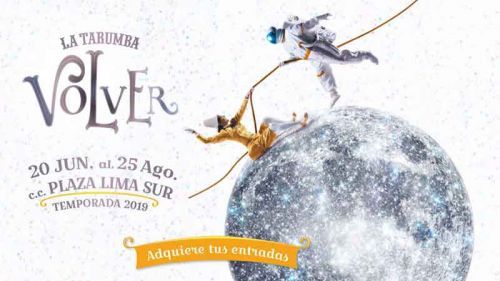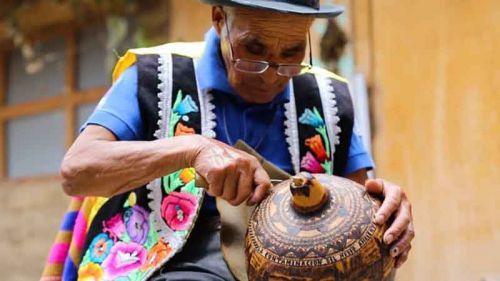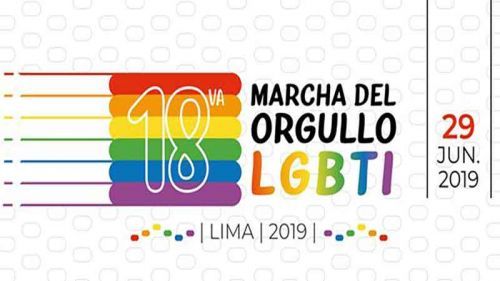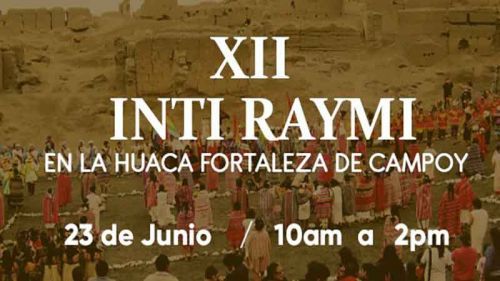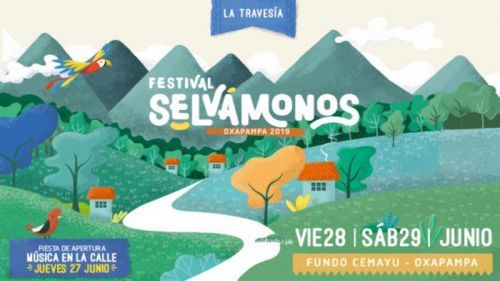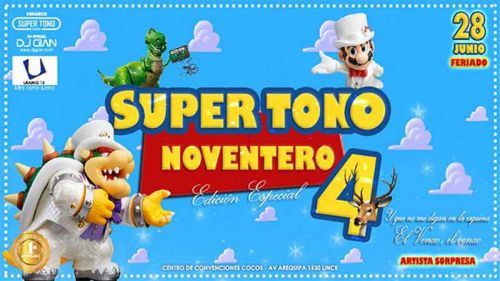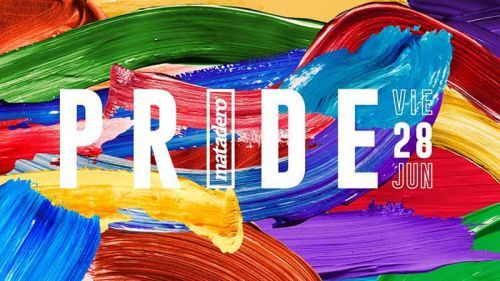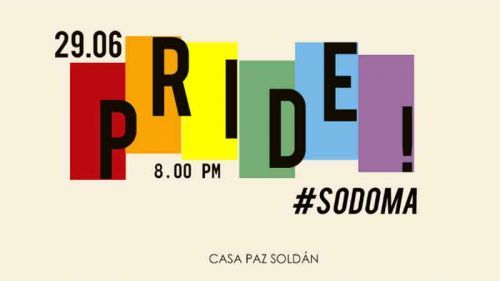Europe’s first knowledge of Peruvian textiles was acquired following the Spanish invasion of Peru in 1532, when the conquistadores included a few fabrics in shipments of gold and silver they sent back to Spain.
None of these early pieces shipped to Europe is known to be preserved, but different European archives still yield detailed descriptions of these products of Peruvian looms, which were the first of their kind to reach Europe. The early Spanish chroniclers, amazed at finding such fine textiles, mentioned in their reports the unusual nature of these cloths, the richness of their colors and the superior quality of their dyes.
Fabrics from Peru, among them many that were made centuries earlier than those admired by the Spanish invaders, have found their way into European and other collections during the past few decades. Although many show designs that seem strange to European eyes, there are among these textiles, produced far from European influences, examples of great elegance and beauty.
The ancient Peruvians left no written records and, as a result, today's knowledge of their culture has been derived almost exclusively from the artifacts and structures which have survived the ravages of time and the destructive tendencies of men. Since textile fibers are among the least durable of materials, these have been preserved only under the most favorable circumstances. In Peru, in the coastal area’s conditions prevailed which were more or less parallel to those of ancient Egypt. Rainfall was almost unknown and mainly due to burial practices, numerous fabrics were left undisturbed in protected locations for long periods of time.
Beginning less than a century ago, scientific excavations of parts of the cemeteries and areas of ancient habitation have made it possible to reconstruct a tentative sequence for pre-Columbian cultural development. This indicates that for some 4,000 years prior to the Spanish conquest, the inhabitants of the western coastal and highland regions of South America produced woven textiles. The earliest so far recovered are of cotton and bast fibers. Later, textiles were made mainly of cotton and wool with some bast fibers and hair used for special purposes.
Cotton in white and several shades of brown is known to have been cultivated in the coastal valleys. Wool came from the native camelids of the highlands, the Llama, Alpaca, Vicuña and Guanaco. No metal threads are known to have been used and there is no evidence to show that either silk or linen (flax) was known. Sheep’s wool was only introduced by the Spaniards upon their arrival in Peru.
Spinning and weaving were highly developed, making it possible to produce fabrics of various textures. These ranged from cloths of great finesse to coarse, heavy pieces for utilitarian purposes, and from open, lace-like types to others of rug-like firmness. The weaving techniques included most of those known to present-day craftsmen, as well as a large number which are not in current use. Of the standard weaves, only satin appears to have been absent. Pile weaves and twill were used sparingly.
Favored types were tapestry, wrap-face stripes in plain and pattern weaves, brocades and damasks, gauzes and double cloths, all of which occur in a number of distinctive forms. In addition to patterning produced during weaving, added bands, borders tassels and fringes were used. Feathers, small plaques of gold and silver, as well as embroidery, served for ornamentation. Patterns were produced also by the tie-die methods and painting.
Many of the weaving practices of ancient Peru cannot be duplicated on today’s looms. The Peruvians made most of their cloths with four selvages, frequently weaving first from one end of the wrap and then the other. They built up one unit of a pattern quite independent of the other units, and put wefts in diagonally or in curves, if they wished. This was possible, since their looms were not equipped with a reed and fixed beater as are modern or European style looms.
All of these types of weaving and ornamentation and numerous other textile making techniques, such as twining, knotting, netting, looping and braiding or plaiting, were known and used in Peru. Long before the Spanish conquest, technical and aesthetic competence had developed to a high level and more important to the reconstruction of the picture of the cultural growth of these people, there were marked local and temporal preferences for certain techniques, designs and colors.
The first scientific excavations, especially those of parts of the cemeteries of Pachacamac, not far from Lima, made it possible to begin mapping out a sequence for Peruvian cultural development. Subsequent work at Pachacamac, at Ancon, and in the Lima valley of the central coastal region, on the Paracas peninsula, in Nazca, Ica, Chincha, and Cañete valleys to the south, and the Chancay, Supe, Chicama, Santa and Moche valley, to the north, among others, has shown a number of fairly distinct styles.
Three of these are generally considered being pan-Peruvian. The earliest of the three was Chavín, a northern style, which is believed to have penetrated far enough to the south to have influenced Paracas designs such as are shown in many of the famous embroidered Peruvian textiles. The second of these was the Tiahuanaco style. This, believed to have had its origin in the southern highlands, spread to the coast where though modifications a distinct Coast Tiahuanaco variant developed. In textiles, this style is seen in many fine Peruvian tapestries, some of which appear quite modern in design.
Later, Inca influence spread over much of Peru, leaving its mark but never completely supplanting the older styles. Inca textiles probably are best known by large poncho-shirts in tapestry with designs consisting of many small squares, and bags with small llama figures. Numerous other styles, some paralleling the above, some intervening, are equally distinctive. Of these, most are believed to have had limited geographical distribution and are known as local styles.
Continue reading below the picture gallery...
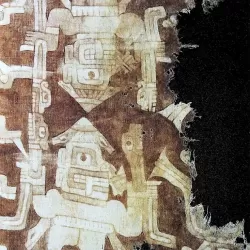
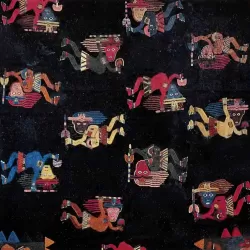
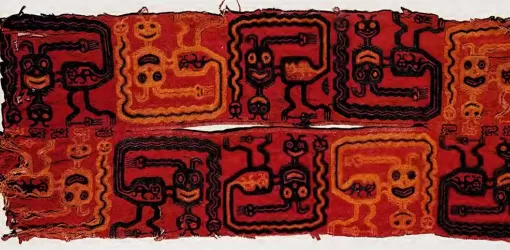
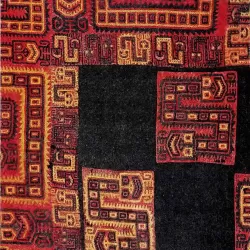
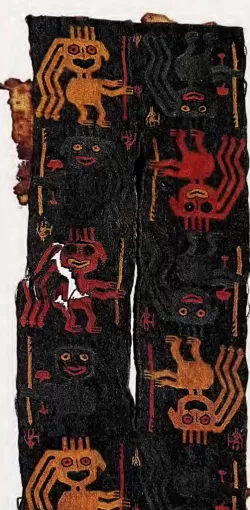
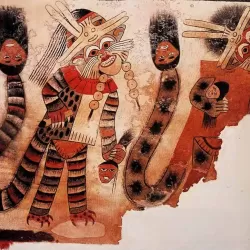
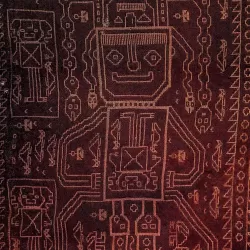
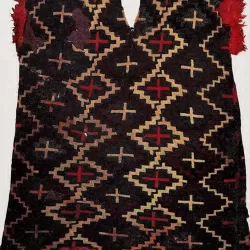
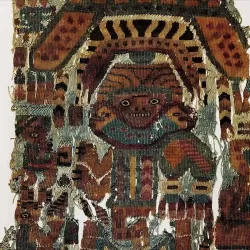
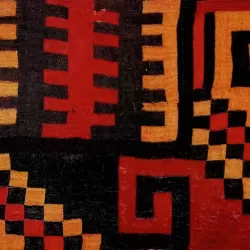
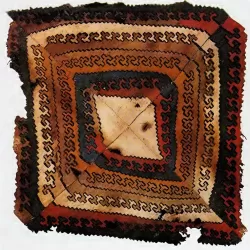
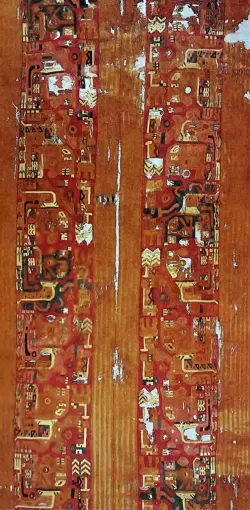
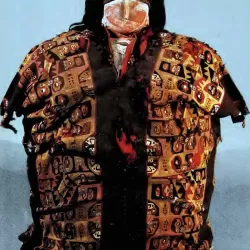
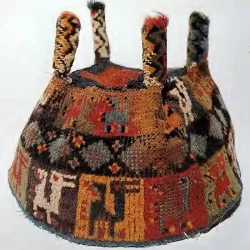
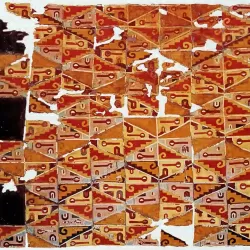
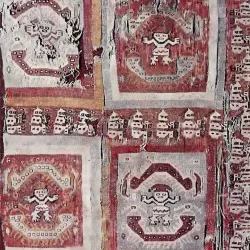
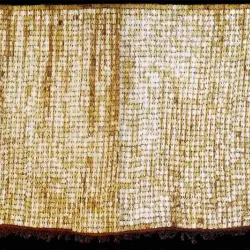
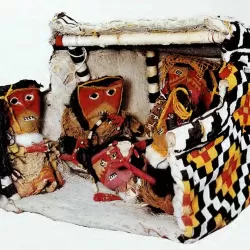
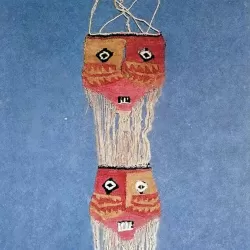
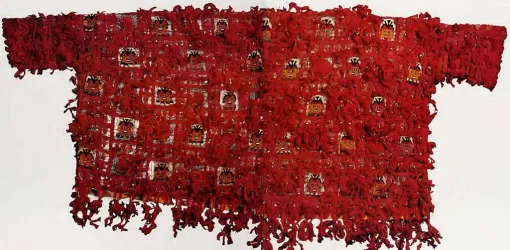
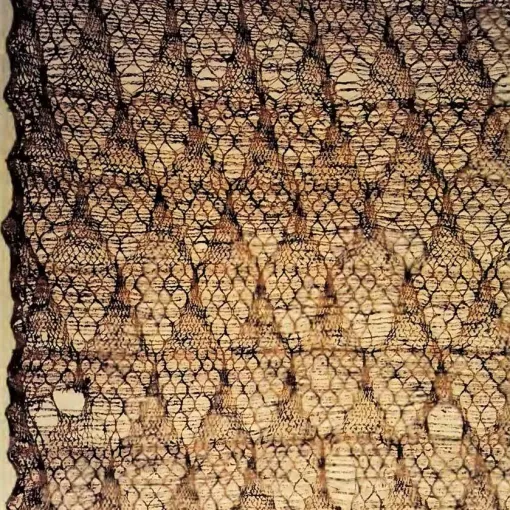
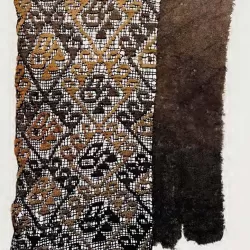
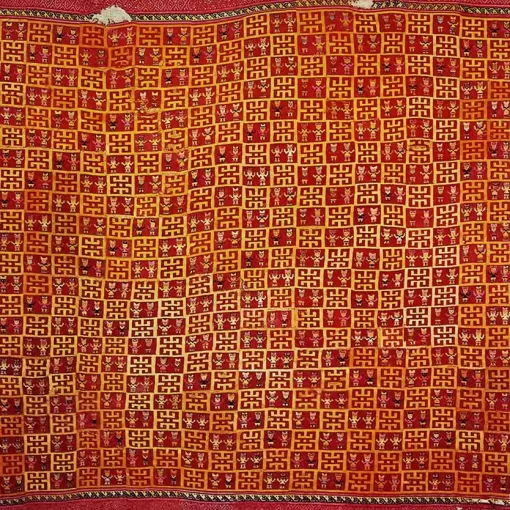
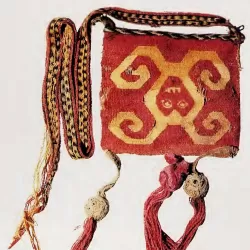
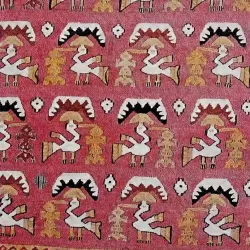
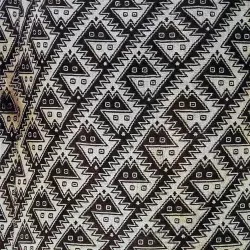
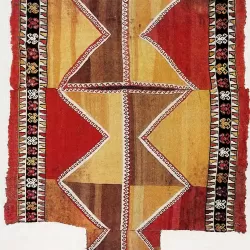
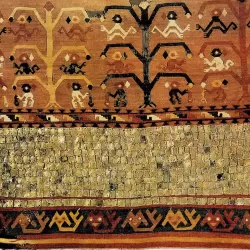
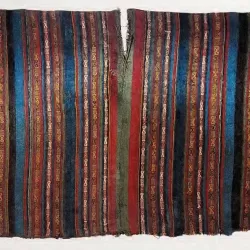
The study of Peruvian textiles has lagged behind that of ceramics and other comparatively durable materials. For the latter, both developmental sequences and original geographic distribution is as expected more complete, and thus their study more rewarding from an archaeological viewpoint. Unfortunately, much field work has been done by researchers lacking textile competence, resulting in inadequate textile records and reports from some of the more important excavations. Generally, only archaeologists trained in France or Germany had the required textile knowledge.
Fortunately, the earliest, as well as some of the most recent investigations have been made by representatives of these two schools and in these cases excellent textile records have been kept. Further, little of the available information concerning Peruvian fabrics has been assembled and published. Much that might be known of the treasures saved from the oblivion of Peruvian grave fields, is still buried in library and museum archives and storage rooms of Europe, Asia and both North and South America. A much greater quantity of wholly undocumented materials remains in other collections, both institutional and private, and many of these are inaccessible to students, research workers and the public in general.
Despite Peruvian laws designed to halt the wholesale desecration of the ancient cemeteries and the unlimited exportation of textiles and other treasures constituting Peru's valuable native heritage, a great many artifacts continue to find their way into the hands of dealers both inside and outside of Peru.
Some of these items were collected many years ago, before restrictions were imposed; some have been salvaged during recent non-archaeological activities, such as construction and road works; others represent materials gathered secretly by locals and later offered sales to tourists and traders. For all of these non-scientific collections, only the most meager information is recoverable.
Frequently only the general area from which the items came is known or revealed. Regardless of this lack of archaeological or historical information, the technical and aesthetic importance of these fabrics is expanding. The textiles of ancient Peru continue to increase in value and attract worldwide interest. The variety of the fabrics produced is endless; their intricacy defies description; and the colors and patterns make many of them fantastic conversation pieces.
It is unbelievable that such extravagant fabrics could have been produced without the aid of complex mechanical apparatuses. Yet this lack of a fixed mechanical loom set-up made it possible for the weaver to work with great freedom of both technique and design, These Peruvians developed skills which have never been surpassed and design traditions quite distinct from those of Europe and the Classical cultures of the Old World.
Many Peruvian textiles are so well known as they have been shown in numerous museum exhibits and found their way into publications worldwide. They form a fundamental part of the Peruvian culture, are even today seen as part of local traditions, and the characteristic clothing represents the different regions of the country.


